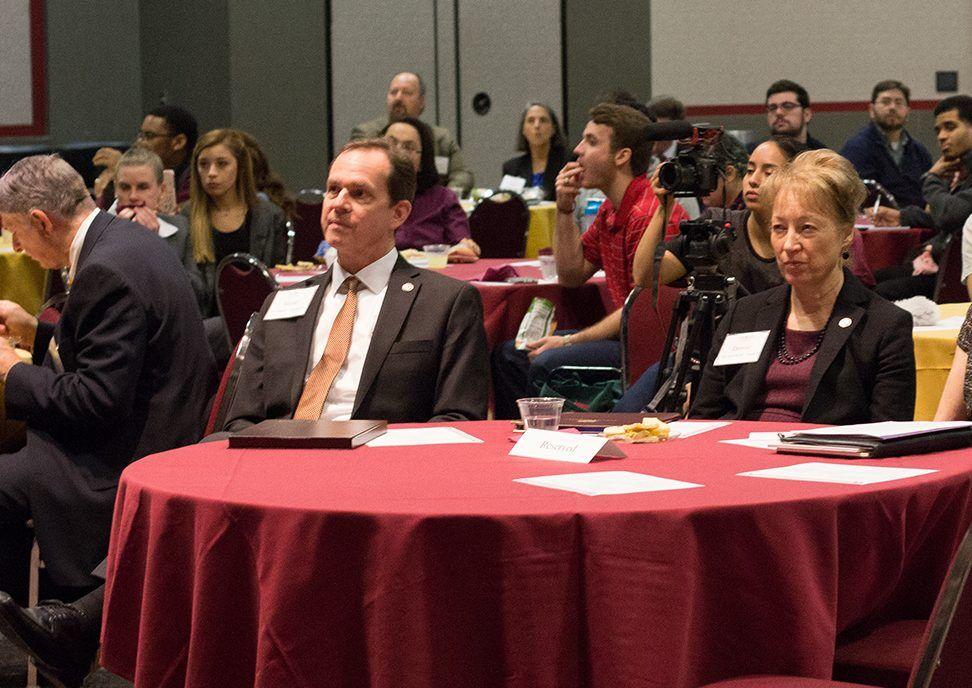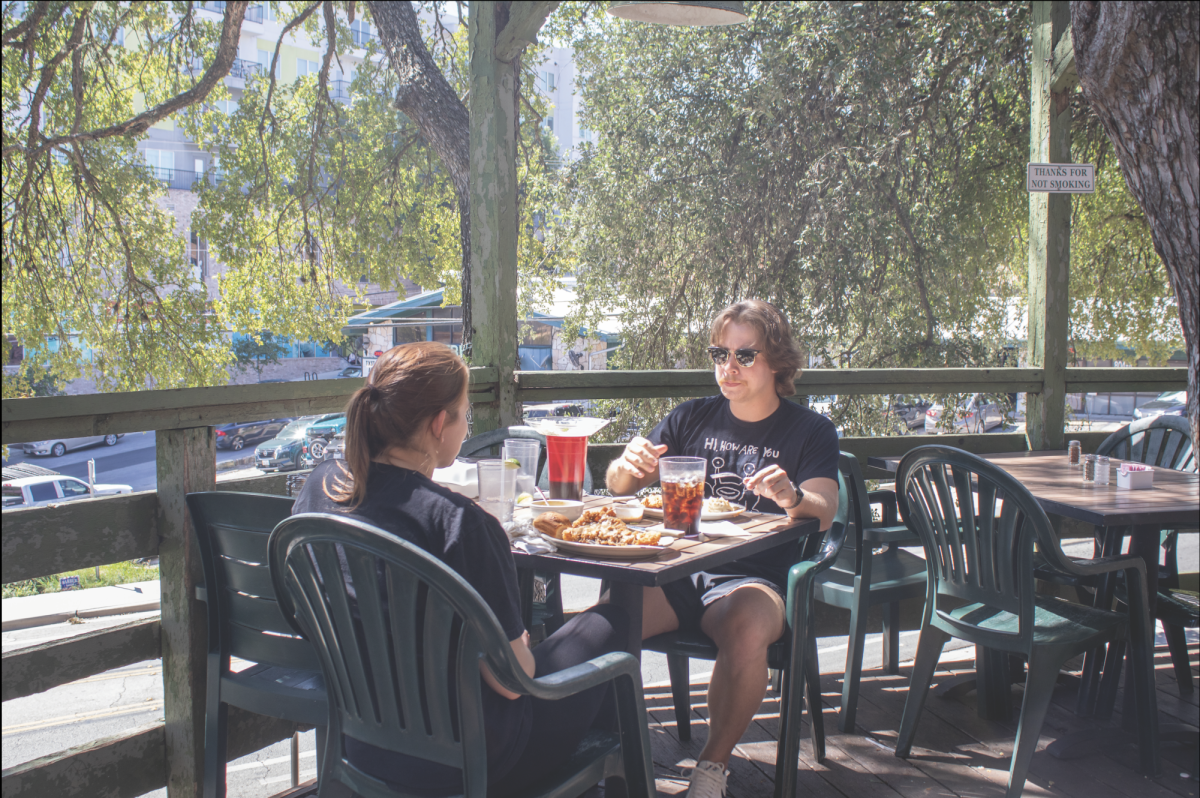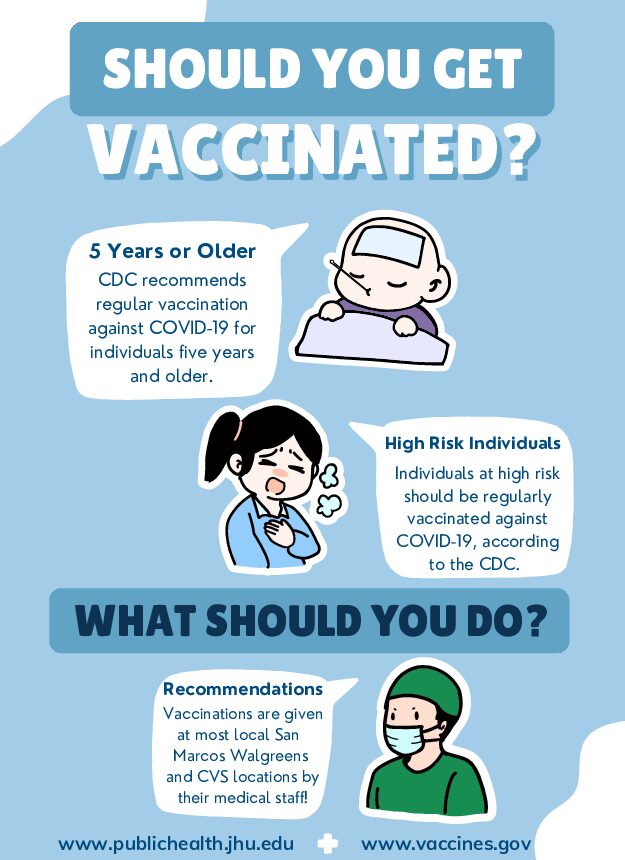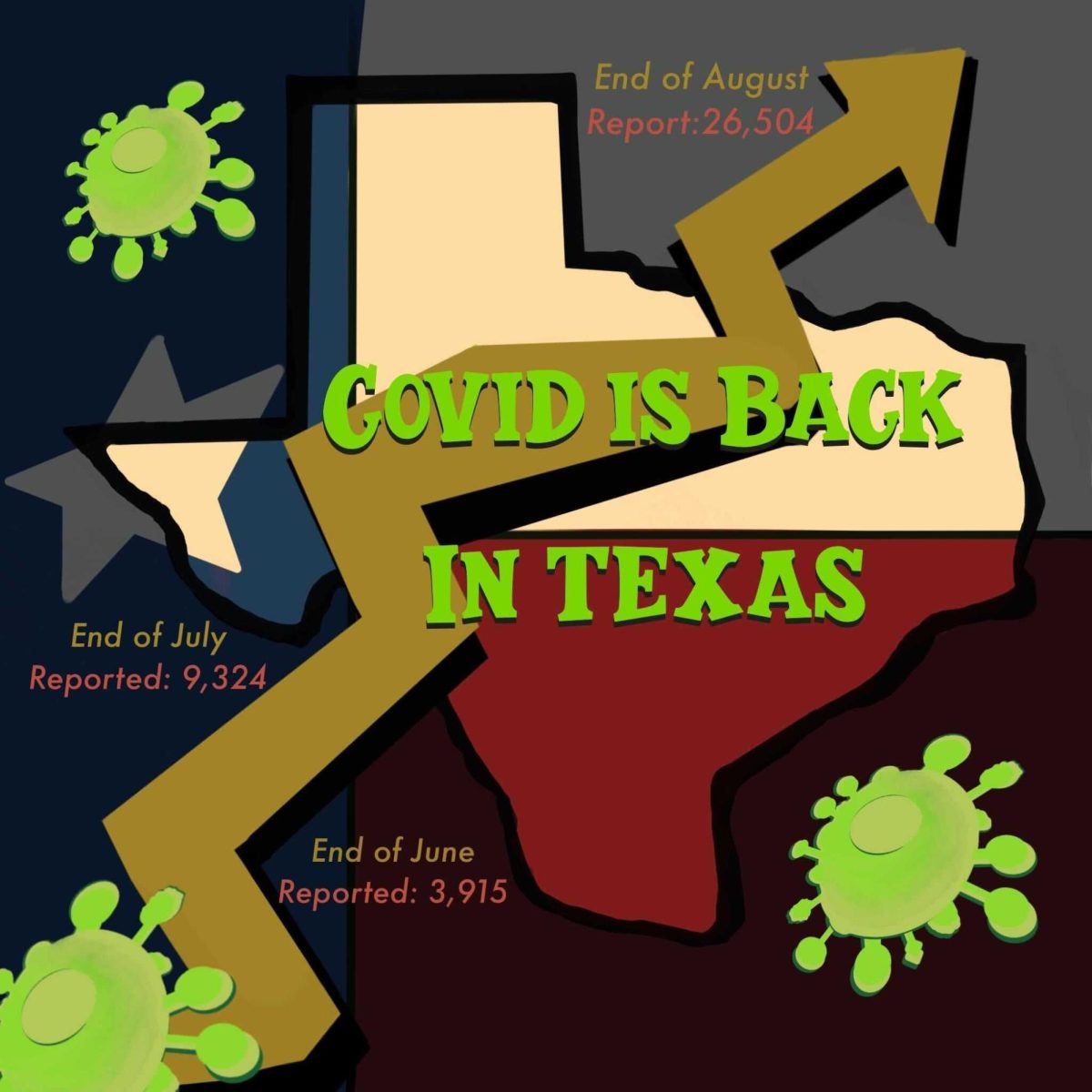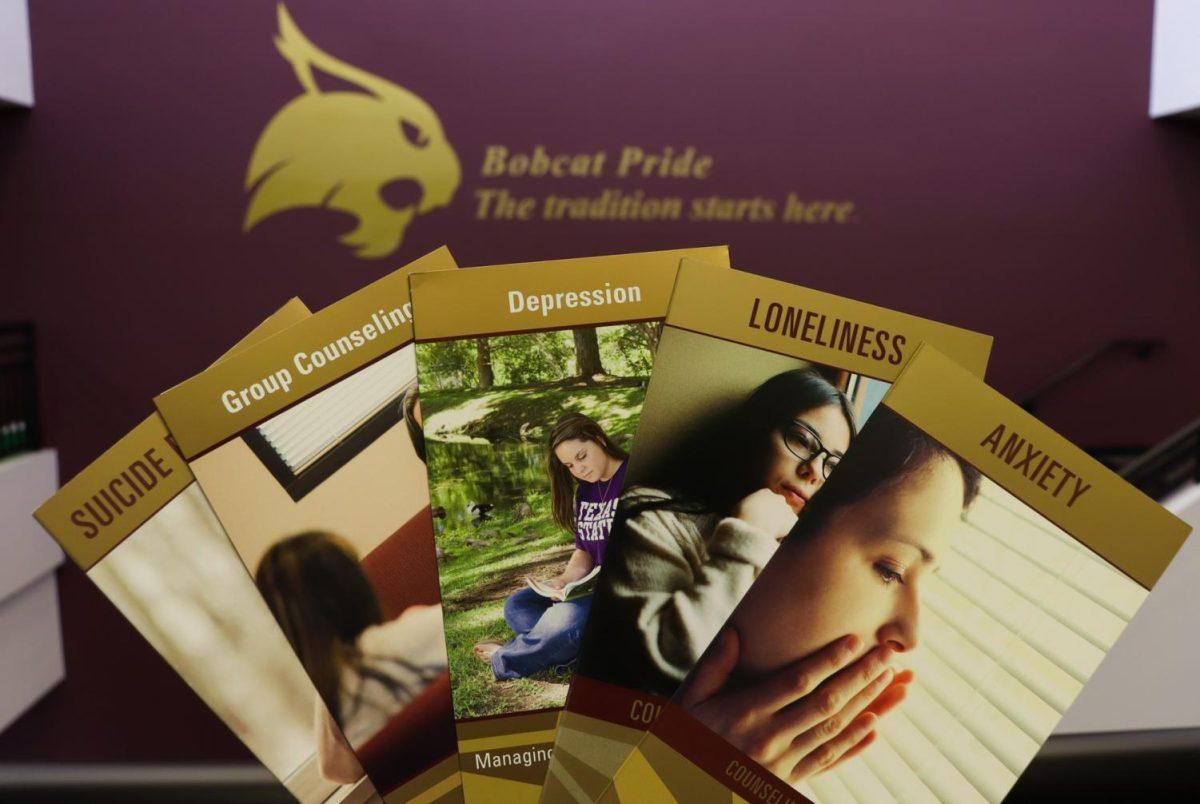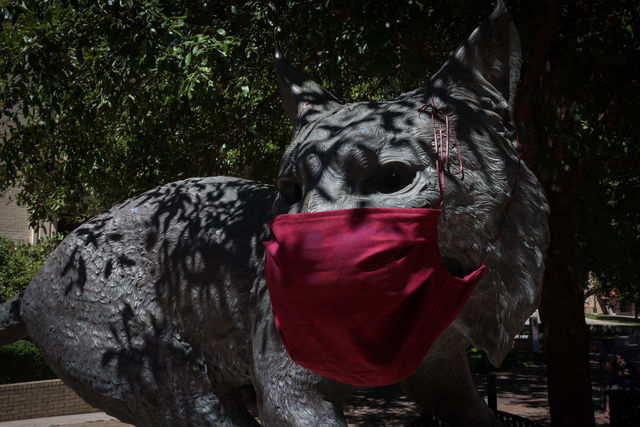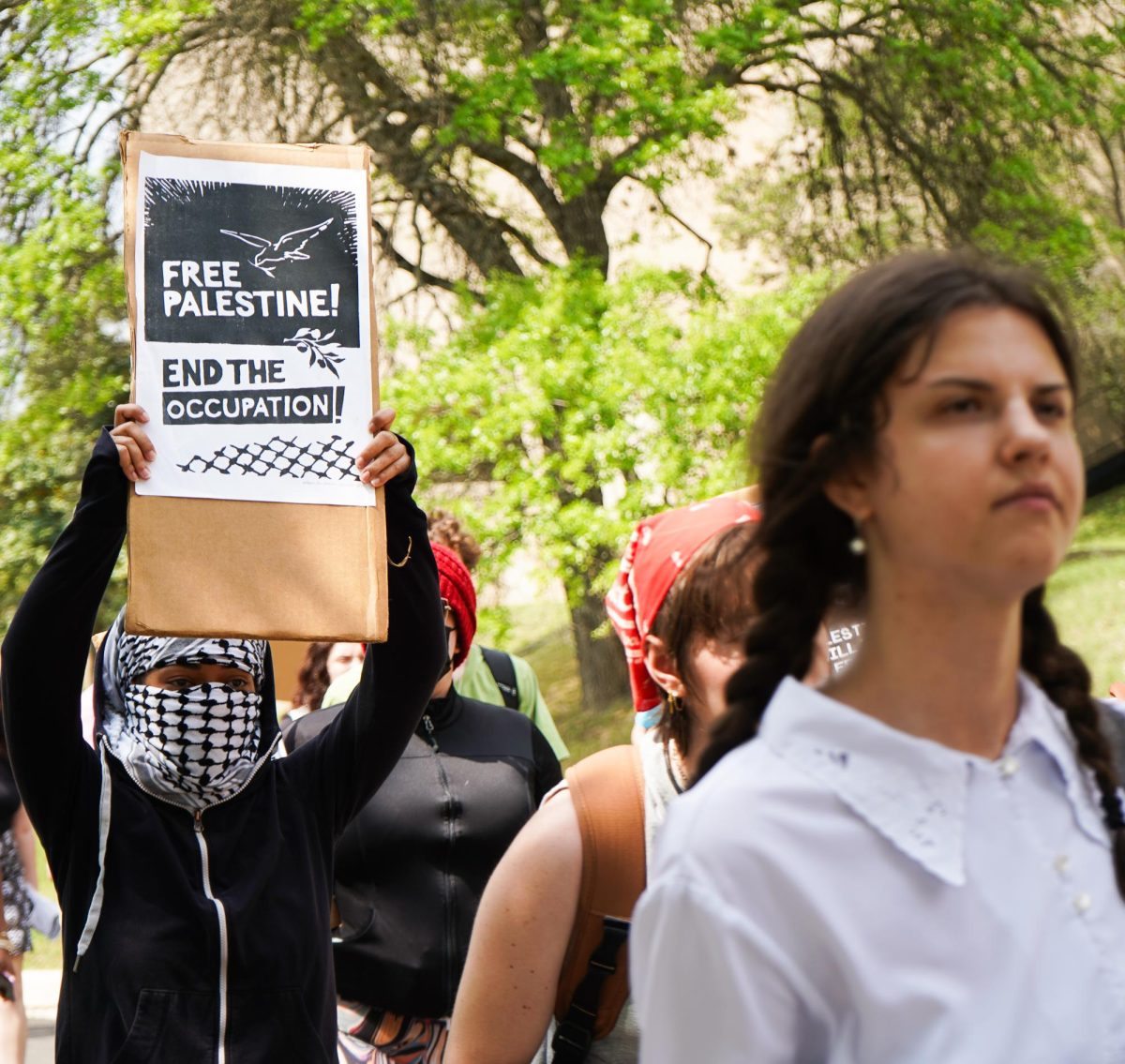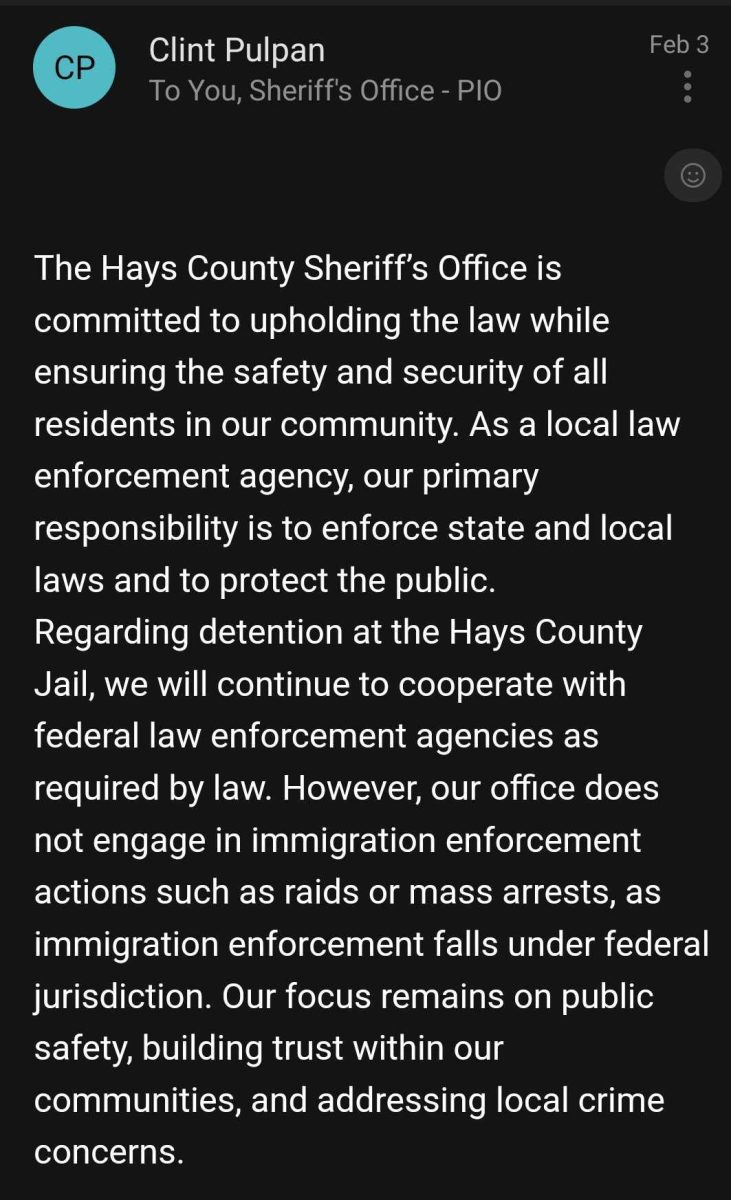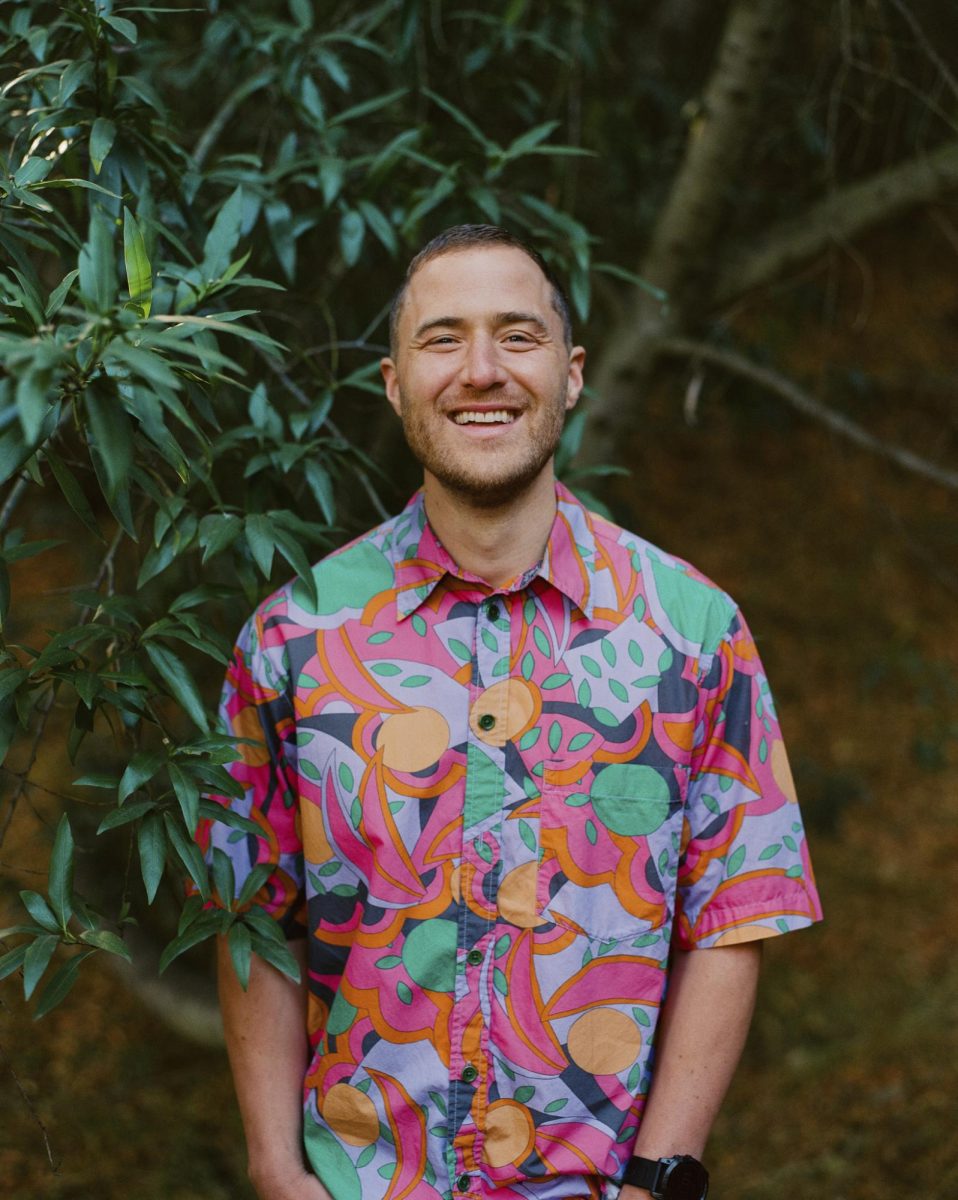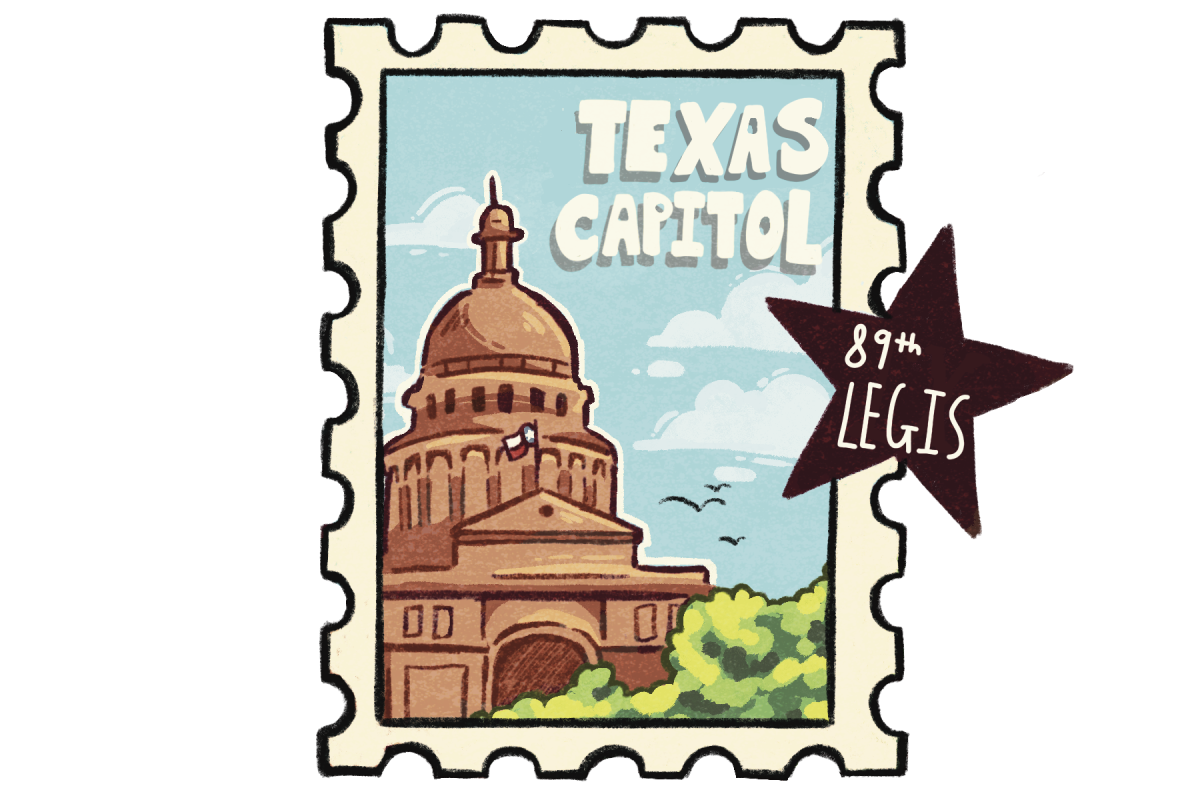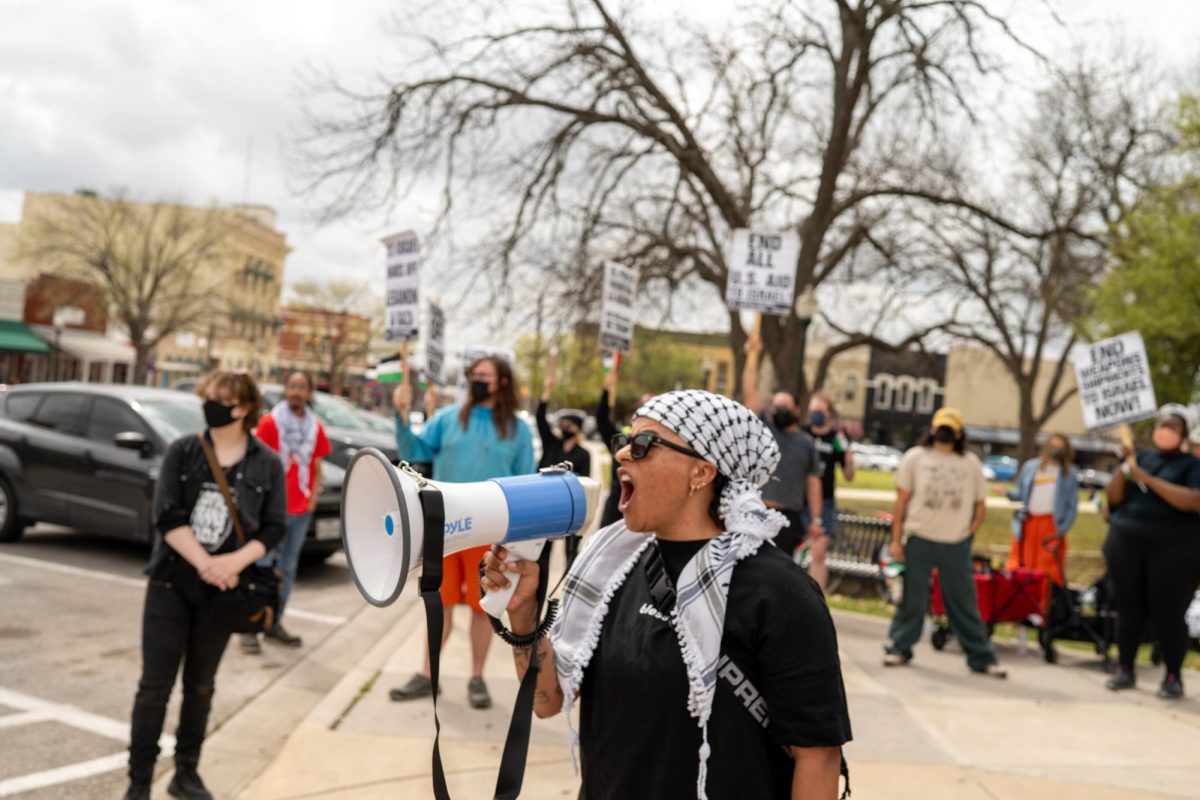Editor’s note: Editor-In-Chief of The University Star Jakob R. Rodriguez sat down with the University President Denise M. Trauth and University Provost Gene Bourgeois March 12 to talk about Texas State’s preparedness and plan of action for combating the spread of the novel coronavirus (COVID-19).
Q: So, can you just start with a very general statement about what prompted administrators to start moving to online classroom learning models?
Bourgeois: It really goes back to if we were going to cancel classes, and then once classes would be resumed, what’s the appropriate delivery method given that we’re trying to basically engage in social distancing, which means we don’t want to have aggregations of students in organized classes, you know, as much as possible. So that’s the premise.
Trauth: Really, we started planning for this. The vice presidents (of departments) started planning, you know, their divisions, probably about three weeks ago in earnest. I mean, I think that’s when the country started to come to grips with the fact that this is a pandemic. And so each of the vice presidents was working on their division, their business continuity plans. So, there’s a business continuity plan in every division. And of course, they’re going to be very different because the provost is going to be very focused, not exclusively, but a lot focused on teaching and learning. Whereas the division of information technology, you know, has a completely different focus, but then there’s overlap. So, information technology was working on the technologies that we use. So, that probably started a couple of weeks ago. And then gradually, as this whole thing ramped up, we started to not just keep, you know, working on those continuity plans, but also get, for lack of a better term, a framing device here, again, that we did that in conjunction with Dr. Carranco, who is very much in touch with the (Centers for Disease Control) and with the public health in Texas, in particular Hays County. And the framing device more and more came down to what we’re talking about social distancing, that we passed a point in America where we could keep it contained. And because we didn’t have enough test kits, keeping it contained was even more difficult than it should have been. So, that’s when we went to the social distancing, a protocol that’s really at the national level, what we’re being told, that’s the way now to mitigate it. So, moving to non-face-to-face classes, and that’s really I think, a better way to refer to it then online because actually online means something pretty specific.
Q: I guess we’re all kind of just like, you know, writing the book for it right now, because this has not really ever happened at the scale.
Trauth: Exactly. And not just at this university, right, obviously the whole country is in this position. And frankly, the two coasts are in much worse (shape.)
Q: So, obviously, you guys have been watching things across the country kind of developing across this neighboring area. Did other decisions from The University of Texas or Texas A&M or any other university across America kind of give you guys like a framework to work around or plan? How closely with the Texas State University System have you all been working?
Trauth: We’ve had several conference calls among the Chancellor and the seven presidents, including one this morning, Let me back up and say that one of the things about the TSUS system is that the seven institutions are all different. There’s no two really alike. And when I say they’re different, they’re different in size. They’re different in complexity. And so our chancellor is very flexible in terms of working with the presidents. And he really did direct us at the outset about a couple of weeks ago, to do what was best for our university. And so what we studied over the last many weeks is what are the other institutions in Texas and particularly the emerging research universities, because it’s a pretty big set here of institutions. So, that’s what we’ve really been paying attention to UT Austin, obviously also, and just seeing how they are approaching it. But I should stress that while TSUS is more than willing to give us guidance, help, advice. The chancellor really did ask the presidents to put together a plan that made sense for our university. So it’s, it’s not like if you look at the UT System, for example, they’ve got at least four institutions that are pretty much the same, but there’s no other institution within TSUS that’s like Texas State. So, we really did pay attention to how the other schools we’re dealing with this. And what we came up with, I think is something that’s a hybrid. And it’s what a lot of other schools are doing. But it also is (has) a Texas State culture on top of it. I don’t know that any other school has gone to that length of asking faculty, to be compassionate, to be flexible to, to take the culture we’ve got here and expand it into this remote learning.
Bourgeois: And you know, if you think about it, I mean, our faculty know our student demographics in terms of first-generation students and Pell eligible students. And so I think they’re all cognizant of that as well as everybody else, but especially knowing that whatever they do, you’ve got to remember who you guys are. And I feel very good about that.
Q: When people usually hear titles like the university president, the provost, they may not know that you all have the authority to close campus or suspend classes, does an announcement to close campus come from the university or the university system?
Trauth: No, no that came from, that definitely came from us. I mean, the chancellor asked me, ‘What are you doing in Texas State?’ And I knew that would be his approach. So, that’s one of the reasons why we ramped up several weeks ago with our continuity plans, because we knew that we were going to have to design it ourselves. Again, looking at what other schools in Texas are doing.
Bourgeois: We’re keeping our same academic calendar right now. Other institutions are not necessarily doing that.
Q: Some students were immediately concerned with if there would be an alternative cost to all of the remote learning stuff.
Trauth: No, no, charge? No.
Bourgeois: No.
Q: What is Texas State’s plan for students with unreliable internet connection in remote learning?
Bourgeois: Again, I think what’s going to have to happen is those students will need ultimately to communicate with our faculty members in those cases, again, so, the faculty don’t know that I mean, but what I want them to assume is that they try to deliver the most low-tech, low-bandwidth option as possible. Now, realizing that some students are already online, you know, in courses, so whatever they’ve been doing, they’re going to continue to do as as they’ve been doing. So, if you think about an art project with a portfolio that requires a lot of bandwidth, and or Zoom that includes video and audio connectivity, again, we’re emphasizing audio rather than audio and video, so that again, they can build the delivery methodology, again, based on the lowest tech denominator. That’s what we are asking them to do.
Trauth: If we see a persistent issue, then we’ll come in and address it.
Bourgeois: And if it’s one that I would say is infrastructure-related, then we’ll talk to Mr. Pierce (Ken Pierce Vice President of Information Technology) to say ‘alright, what are our limitations here?’ Because we’ll need to push that back out to faculty members.
Q: What is the purpose of the one week extended spring break, where does that come from?
Trauth: Well, that really was to make sure that when we start the remote classes, everybody is ready to do that. Because we couldn’t count on the fact that all faculty could use spring break to do this, if they had other plans. Then they weren’t going to be able to be heads down, working on during spring break, by not having classes the following week, we are pretty much guaranteed that faculty can be heads down working on this. So it really was a way to have, when we start the remote classes to have a good start to have everything in place to have the faculty feeling comfortable and confident that ‘yes, I’m ready to do this.’
Bourgeois: They need the time to convert their stuff. Yeah.
Trauth: And like I said, we couldn’t, we couldn’t be sure that the faculty could take spring break into (into account).
Q: How realistic in your opinion is a massive self-quarantine procedure for people who may be traveling outside of the country? Obviously, it’s kind of changed within the past couple of days because of travel measures that the President (Trump) has set forth.
Trauth: I think that we have to all believe that Americans are going to take the high road on this. The word that’s coming from the experts is pretty consistent in what they’re saying. If we take an amount of time here, and we can’t be certain how much time that is, but let’s just say it’s a month to six weeks, and we really do the social distancing. We know the number of confirmed cases is going to go up. We know that because the testing is improving. But even as the number of confirmed cases goes up, that doesn’t mean the actual number of cases is going up. If we take six weeks here, and really do social distancing, we have a chance of mitigating this. If we don’t do that, then it is probably going to explode and go on and on for who knows how long. So, when I say we have to believe that Americans are going to take the high road, that people are going to do the right thing, that people are going to voluntarily do what they’re supposed to do. I mean, we have to believe that.
Q: So, what would cause the school to extend this remote learning period?
Trauth: Well, I think we have to get advice from the medical professionals. Dr. Carranco is a part of every conversation we’ve had now for quite some time. And he’s in touch both, as I said, with the CDC and with public health, and he’s giving us advice. So, we’re taking his advice, and right now, we’re putting a timeframe out there, but we are looking at it every single day. He was in here earlier today. I mean, he’s really the expert. And then you have national experts. I mean, you there’s information that’s coming in.
Q: Do you think there are certain protocols or procedures that exist now that have been created within the past couple of days or weeks that lend itself to being better prepared for something similar in the future?
Trauth: Sure. And I’m certain that the business continuity plans in each division—capturing everything we’re doing here and adding, like this swill get added.
Bourgeois: I think in some respect, aggregation of resources, to be able to better communicate them to the different audiences, whether again, they’re faculty, staff or students, it’s definitely something that is happening right now. That otherwise had not happened because, again, faculty who were teaching online could go here and they knew where to go. Now you’ve got people who haven’t been teaching online, they don’t know where to go. Students who haven’t had online classes, how are they going to do this? So, I think it’s the act in some cases aggregation of, of information and resources, that it’s been, I think, a positive development. We can use again, replicated in other situations.
Q: Students on campus, particularly first-year students, are wondering if this will impact residential halls. Will it?
Trauth: We’re not closing the residence halls.
Bourgeois: Right.
Trauth: But again, think about it. If only some, a small portion of students, are living in the residence halls and you got social distance that was really okay.
Bourgeois: So, let me say something about international students. It’s not this question, but it’s something that was actually the first thing on their minds, their visas. And we’ve gotten, we’ve gotten the information that given the circumstances around the country, SEVIS (Student and Exchange Visitor System) is allowing international students to take online courses. See, they’re not allowed to do that. If they do, their visa is, what would it be disallowed. I don’t know. The technical pullback term. But anyhow, we’ve gotten the guidance on that now we’re responding back. We have 10 days to respond to tell them from the day we go public with that decision. My International Affairs Office will now respond back to that agency and tell them here’s when we did and here’s our plan going forward. So, we’re committed, we’ve sent out communication. That’s one on one. Yes, you have to you earlier now, we sent a communication out to international students telling them that their visas are not in jeopardy, because they will now have to take online courses at Texas State. I want that word to get out.
Q: Do you know of any federal funding from the State that would be given to Texas State to assist with the monitoring of COVID-19?
Trauth: Unfortunately, I don’t believe there’s any federal funding that’s going to be forthcoming even if they appropriate money to deal with COVID-19. I do not believe that will come to universities.
Q: Can the university commit to transparency and consistent communication as to the status of those nine students and professor in self-quarantine? What are the statuses of the 10 self-quarantined Texas State community members?
Trauth: We can commit to sharing what we are allowed to share. HIPAA obviously, comes into play here, the privacy law. So, there’s some things that we can’t share about these students, any more than I can just go out there and share your academic file from, you know, a FERPA perspective. But we have communicated about these students that they’re self quarantined. They were not in contact with a confirmed case, but it’s out of an abundance of caution. That they’re self-quarantined. Now, are we going to give you the names? No.
Q: Do you have some sort of reporting protocol for people who may think that they have been exposed to the virus in any capacity?
Trauth: They’re supposed to report to the Student Health Center. And not just students but faculty, staff and students report to the Student Health Center.
Bourgeois: So, faculty, staff or students (who) have been traveling for example, and they come back and they start to exhibit some kind of symptoms, they contact Dr. Carranco.
Q: How will the university compensate student workers who rely on their on-campus jobs for income?
Bourgeois: If they’re here and working, they get paid.
Trauth: They can work, yeah, we are not saying they cannot work.
Bourgeois: But we’re working on, again, I would say continuing student employment employment, including work study students,
student workers to be able to continue to work on justice.
Trauth: And again, I keep saying this, but if you’re working in this office, for example, there’s no issue with social distance. Yeah, so why wouldn’t you just keep working?
Q: Is that the same for just like, just like regular people who aren’t students? People who just work for Texas State for either their main source of income or they work part time at school, is that the same thing?
Trauth: Well, sure, all of our staff are, are it continuing in their jobs? Right, their jobs may change a little bit. For example, if you’re in charge of residence life, your jobs a little bit different, the majority aren’t, but but that’s still a full time job at the university. So, none of that is changing.
Bourgeois: And we’re, again our intention is to be, I would say flexible with student employees. Because we have some program flexible parameters that we can work with, work study, for example.
Q: Did the recent petition made by the student body influence the decision to extend spring break and move to remote learning?
Trauth: Sure, but we made a decision that it had to be a public health decision. It can’t be political. And petitions are kind of political. It had to be a public health decision. But I mean, I certainly was aware of how many people had signed it.
Bourgeois: I would say public health, and again, what’s the appropriate time period to allow the faculty and then the support staff to be able to turn around and be ready to deliver something remotely. Because we knew that if we did that, it would be remote delivery. And so we we had to give them a turnaround time, no matter what.
Q: What was the tipping point, because obviously, you all probably were talking about this last week. And I guess what kind of brought about, the need to do something like right now and address this before spring break?
Trauth: Well, Spring Break was upon us. But also I think that if you look at what was being said at the national level, I though the rhetoric changed pretty dramatically throughout this week. And experts on Capitol Hill testifying very much by yesterday, we’re saying, ‘look at this is a worldwide pandemic.’ I mean, the World Health Organization said it was a worldwide pandemic. And that the only way to deal with this now is through social distancing. That really did hit a crescendo Tuesday, yesterday, and then of course, with spring break upon us, we knew we needed to make a decision.
Bourgeois: To do something. Because otherwise, if we waited a whole other week, then it was too long.
Trauth: Yeah, it was too long. Yeah.
Q: Will this impede commencement ceremonies in the spring, when will seniors be notified?
Trauth: And all I can say is, we are watching and evaluating it pretty far away in the scheme of things. I mean, on one level, it doesn’t feel far away, but on another level every day is a different scenario out there.
Q: So to a graduating senior, would you say to just assume that it will happen?
Bourgeois: I would say right now. Yes. Yes. I think that, in all likelihood is going to be a public health declaration, again, in terms of size, capacity of meeting some people that if that comes out and impacts the commencement time period, that’s what will impact commencement. Deanna would argue the continuation or our resumption of face to face classes, same thing. Right. We’re planning to come back. We’re planning to do things Normally, you know, in mid late April, but if that changes, and we’ve got to quickly think about commencement.
Several staff members of The Star including but not limited to Chase Rogers, Sonia Garcia, Sandra Sadek, Ziek Sanchez, Bella Lopes and Daniel Weeks contributed to the list of questions and formatting of the questions for this interview.
Categories:
Q&A Re COVID-19 with University President Trauth and Provost Bourgeois
March 14, 2020
By Star File Photo
Texas State Provost Gene Bourgeois (left) and President Denise Trauth listen intently during a panel held at the Transitions in American Democracy Symposium in 2017.
0
Donate to The University Star
Your donation will support the student journalists of Texas State University. Your contribution will allow us to purchase equipment and cover our annual website hosting costs.
More to Discover



